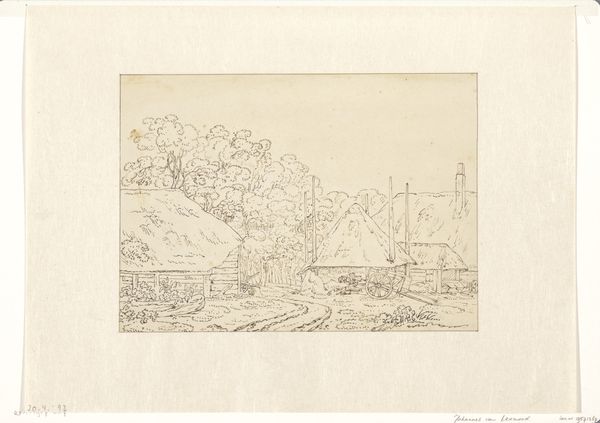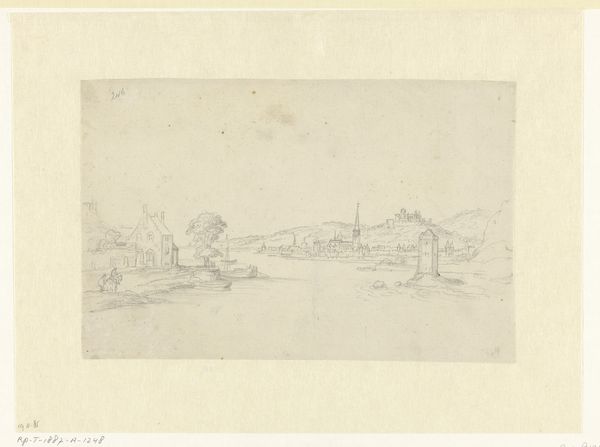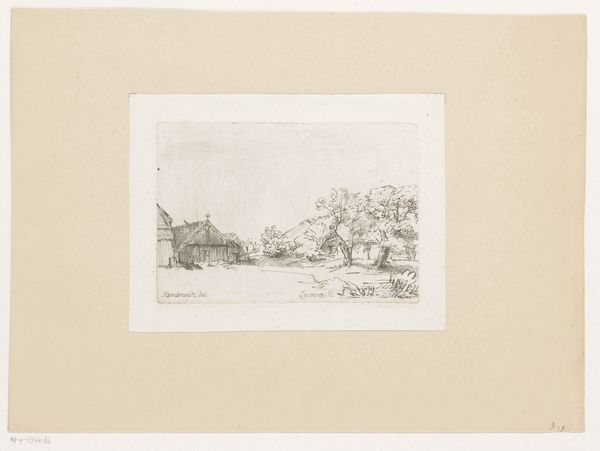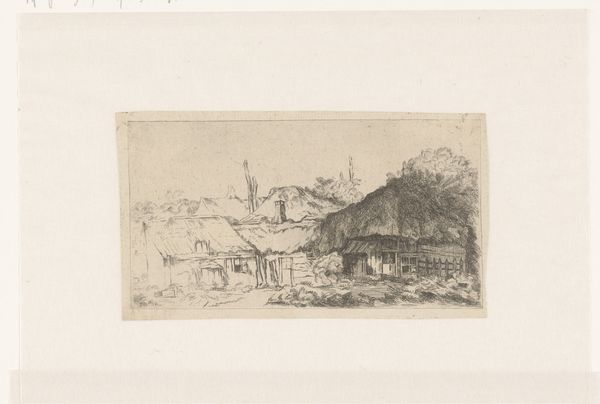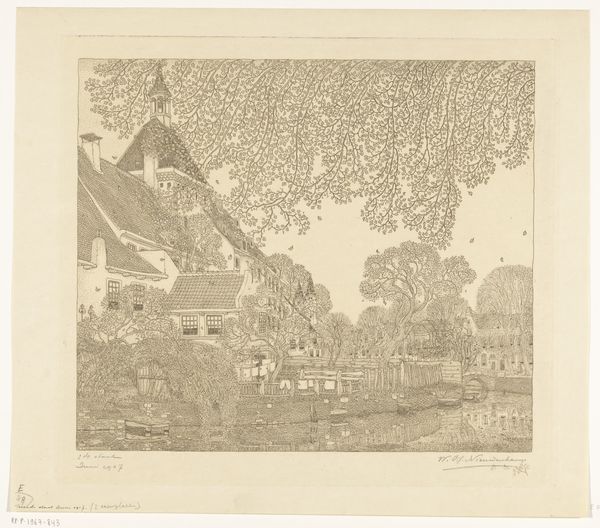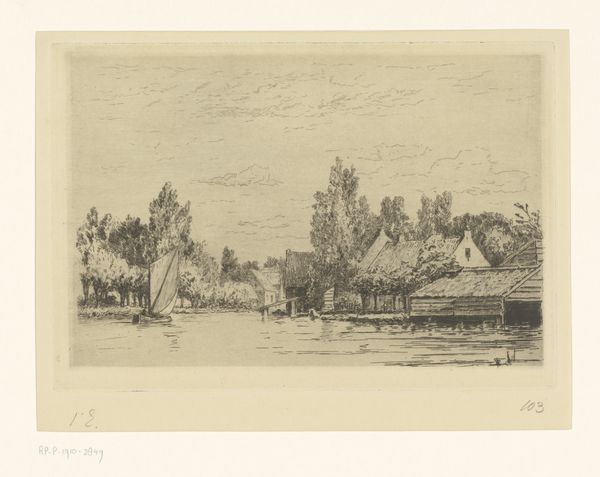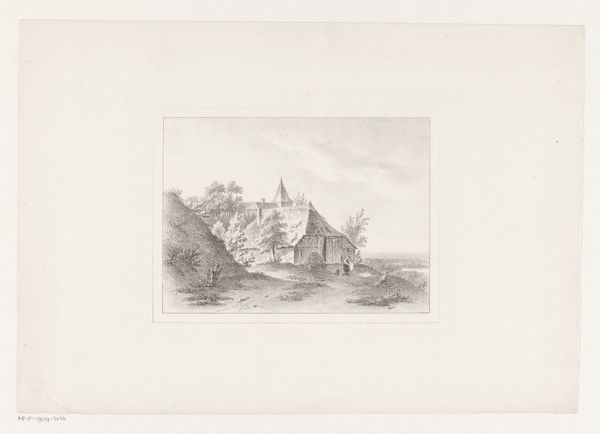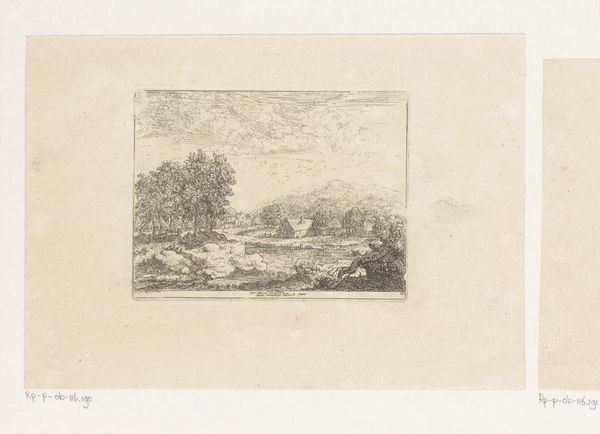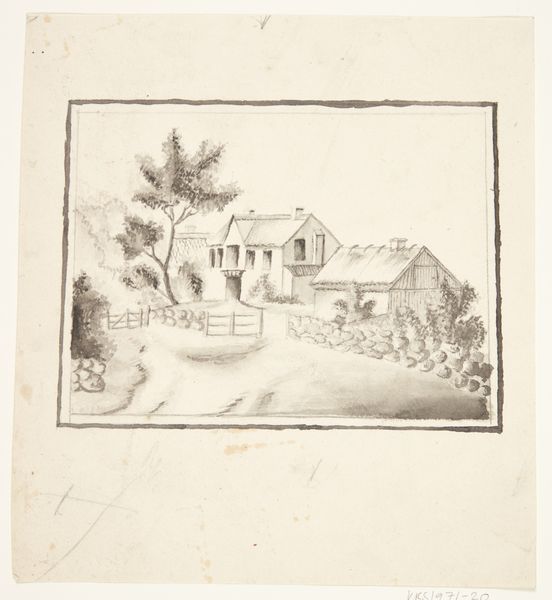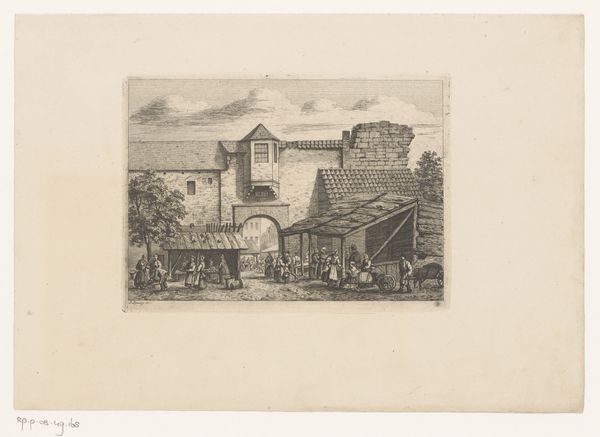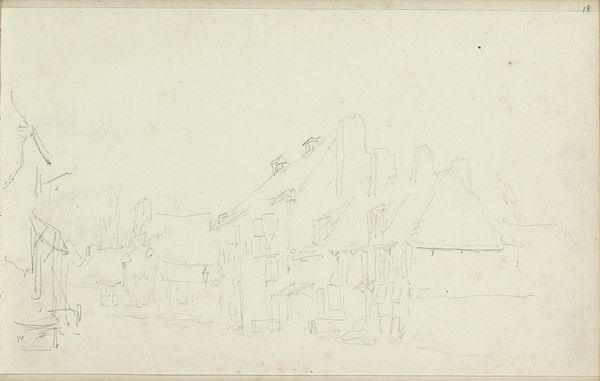
drawing, print, etching, paper, ink
drawing
etching
landscape
paper
ink
romanticism
cityscape
Dimensions: height 190 mm, width 231 mm
Copyright: Rijks Museum: Open Domain
Curator: Ah, the melancholic beauty of a bygone era. What do you make of this etching, 'Zicht op een stad aan het water,' created by Ignace-Joseph de Claussin around 1810? It’s part of the Rijksmuseum’s collection. Editor: It's subtle, almost like a faded dream. A kind of quiet solitude hangs in the air, despite the implied bustle of a town by the water. It reminds me of early memories struggling to stay afloat. Curator: I feel that. Claussin’s hand renders the townscape in soft lines; the architecture has that almost generic, romantic appeal. What do you think gives it such evocative power? Editor: Well, water, for starters. Across cultures, water often represents the unconscious, and the indistinct way the buildings are rendered, their reflections blurring reality and illusion, feeds into that sense of something just beyond our grasp. Even the little boat implies a journey, perhaps an internal one. Curator: That connection between inner and outer worlds definitely rings true for Romanticism. I love how the artist used simple ink on paper to convey such nuanced emotion. Editor: Yes, the etching itself mirrors the emotional landscape it depicts: a fragile beauty preserved, or perhaps on the verge of dissolving away. There’s such deliberate simplicity. It asks us to fill in the blanks, to project ourselves onto its serene blankness. What stands out most to you about the scene itself? Curator: I am drawn to the human figures—small but noticeable; perhaps going about their daily lives unaware that, two centuries later, their world would evoke wistful longings in strangers like us. What do those small figures mean to you, in a symbolic way? Editor: In an otherwise dream-like landscape, they are beacons of ordinary life—the way humanity embeds itself and makes a space "real." They are evidence, as much as the docks or huts, that this liminal space, rendered so fleetingly, was once lived in. Curator: That really does change the texture. It goes from simply "beautiful image" to something closer to recovered memory. Something profoundly fragile and shared. Editor: Right, that echo of the shared—but now past—experience is where this image takes root. We’ve both spun different interpretations, and neither negates the other. And the longer you consider this city on water, the longer those echoes ripple and grow.
Comments
No comments
Be the first to comment and join the conversation on the ultimate creative platform.
